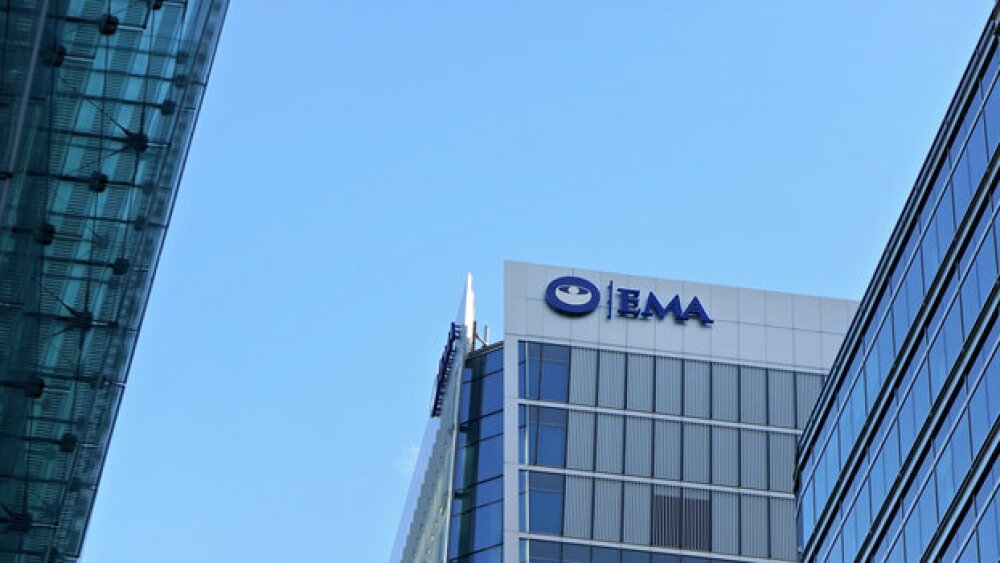ObsEva SA, a biopharmaceutical company developing and commercializing novel therapies to improve women’s reproductive health, announced clinical data from a pilot study on Yselty® for the treatment of severe adenomyosis was presented at the European Society of Human Reproduction and Embryology Virtual 37th Annual Meeting, being held June 26-July 1, 2021.
Two additional abstracts presented on data from ongoing clinical programs: Yselty for the treatment of uterine fibroids and nolasiban for uterine contractility of IVF patients prior to embryo transfer
GENEVA, Switzerland and BOSTON– June 30, 2021 – ObsEva SA (NASDAQ: OBSV) (SIX: OBSN), a biopharmaceutical company developing and commercializing novel therapies to improve women’s reproductive health, today announced clinical data from a pilot study on Yselty® (linzagolix) for the treatment of severe adenomyosis was presented at the European Society of Human Reproduction and Embryology (ESHRE) Virtual 37th Annual Meeting, being held June 26-July 1, 2021. Additionally, 52-week data from two Phase 3 studies of Yselty for the treatment of uterine fibroids, as well as results from an analysis of uterine contractility in women who participated in the IMPLANT 1 Phase 2 study of nolasiban for in-vitro fertilization (IVF) patients prior to embryo transfer (ET), was presented.
“We are encouraged by the positive data generated from the pilot study, demonstrating the potential clinical benefit of Yselty for the treatment of severe adenomyosis,” said Olivier Donnez, M.D., Ph.D., a key opinion leader in gynecologic therapeutics. “Suppression of estradiol using GnRH antagonists has been shown to be an effective treatment for endometriosis and uterine fibroids. Building on this, results from our study indicate that a full-suppression dose of Yselty reduces uterine and adenomyosis lesion size, as well as abnormal uterine bleeding and pelvic pain. We look forward to expanding on this study, potentially exploring a partial suppression dose to maintain efficacy after 24 weeks as we continue to work toward maximizing the full potential of Yselty to improve quality of life for patients.”
Yseltyfor the Treatment of Severe Adenomyosis
The abstract, titled “Efficacy and Safety of Linzagolix for the Treatment of Severe Adenomyosis: Initial Results from a Pilot Study,” is presented by Dr. Donnez in an ePoster and available on-demand through the ESHRE conference portal.
This single-center, open-label, exploratory study was designed to assess the efficacy and safety of Yselty in the treatment of adenomyosis (EudraCT number: 2017-004-042-14). Premenopausal patients with MRI-confirmed adenomyosis, moderate-to-severe pain and abnormal uterine bleeding were treated with high-dose Yselty (200 mg) for 12 weeks followed by low-dose (100 mg) for 12 weeks. The primary measure of efficacy was the reduction in uterine volume assessed by MRI. Other endpoints included adenomyosis lesion volume, pain, hemoglobin, uterine bleeding and quality of life.
Summary of the data:
Key takeaway: After 12 weeks, uterine size was significantly reduced, adenomyotic lesions regressed and symptoms, including pain and anemia, improved.
- Estradiol levels: Median serum estradiol was suppressed to 12 pg/mL after four weeks and maintained up to 12 weeks.
- Uterine volume: Mean ± SD uterine volume was 162 ± 117 cm3 after 12 weeks, a 57 ± 16% reduction from baseline with marked regression of adenomyotic lesions.
- Pelvic Pain: Mean ± SD overall pelvic pain score (0-10 numeric rating scale) was reduced from 8.4 ± 1.1 at baseline to 2.4 ± 3.4 (p=0.0035) and there were also improvements in dysmenorrhea, dyspareunia, non-menstrual pelvic pain, and dyschezia scores.
- Uterine bleeding: No subjects reported uterine bleeding between weeks four to 12.
- Hemoglobin: Mean ± SD hemoglobin was 12.1 ± 2.0 at baseline and 12.8 ± 1.1 after 12 weeks.
- Severe anemia: Severe anemia was resolved after 12 weeks.
- Safety and tolerability: The most common side effect was the expected hypoestrogenic side effect of hot flushes, which were reported by six out of eight subjects.
Yselty for the Treatment of Uterine Fibroids
The abstract, titled “Long-Term Secondary Efficacy of Linzagolix for Heavy Menstrual Bleeding (HMB) Due to Uterine Fibroids (UF): 52-Week Results from Two Placebo-Controlled, Randomized, Phase 3 Trials,” is discussed by Hugh Taylor, M.D., during an oral presentation session.
PRIMROSE 1 (USA, NCT03070899) and PRIMROSE 2 (Europe and USA, NCT03070951) were randomized, double-blind, placebo-controlled Phase 3 studies that investigated the efficacy and safety of Yselty with and without hormonal add-back therapy (ABT: 1 mg estradiol/0.5 mg norethindrone acetate) once daily for 52 weeks.
Summary of the data:
Key takeaway: As previously reported in the PRIMROSE 1 and PRIMROSE 2 studies of Yselty for the treatment of uterine fibroids, partial or full suppression of estradiol with once daily doses of either 100 or 200 mg, with or without ABT were effective in reducing heavy menstrual bleeding at the 24-week time point. Additionally, improvements in clinically relevant secondary endpoints, including pain, anemia and health-related quality of life (HRQL) were observed. These effects were maintained at the 52-week time point, supporting the durability of the treatment effect of Yselty.
Pain scores:
- PRIMROSE 1 subjects had a mean baseline pain score of 6.6 and PRIMROSE 2 subjects had a mean baseline score of 4.8.
- Pain Scores: Mean ± SD change from baseline at 52 weeks:
| PRIMROSE 1 | PRIMROSE 2 | |
| 100 mg | -3.3 ± 3.1 | -2.6 ± 3.1 |
| 100 mg + ABT | -2.7 ± 3.2 | -2.6 ± 2.8 |
| 200 mg/200 mg + ABT | -2.6 ± 3.0 | -3.0 ± 2.6 |
| 200 mg + ABT | -3.9 ± 3.2 | -2.8 ± 3.0 |
Hemoglobin levels in anemic patients (<12 g/dL):
- Hemoglobin levels remained higher than baseline in all treatment arms.
- Hemoglobin: Mean ± SD change from baseline at 52 weeks:
| PRIMROSE 1 | PRIMROSE 2 | |
| 100 mg | 1.7 ± 1.9 | 1.2 ± 1.9 |
| 100 mg + ABT | 1.9 ± 1.7 | 2.9 ± 1.8 |
| 200 mg/200 mg + ABT | 2.2 ± 2.4 | 2.4 ± 2.1 |
| 200 mg + ABT | 2.7 ± 1.9 | 3.0 ± 1.4 |
HRQL total scores:
- Quality of life, measured on the UF-QoL questionnaire, increased across treatment arms. The mean baseline HRQL total score was 36.4 in PRIMROSE 1 and 46.1 in PRIMROSE 2.
- HRQL total score: Mean ± SD change from baseline at 52 weeks:
| PRIMROSE 1 | PRIMROSE 2 | |
| 100 mg | 25.0 ± 26.2 | 16.8 ± 24.0 |
| 100 mg + ABT | 34.2 ± 30.1 | 29.6 ± 23.2 |
| 200 mg/200 mg + ABT | 29.7 ± 29.2 | 31.9 ± 26.8 |
| 200 mg + ABT | 38.3 ± 29.2 | 30.7 ± 26.0 |
Nolasiban for Uterine Contractility of IVF Patients
The abstract, titled “The Effect of Nolasiban on Uterine Contractility at The Time of Embryo Transfer in in vitro Fertilization Patients,” is presented by Connie Rees, M.D., in an ePoster and available on-demand through the ESHRE conference portal.
The study retrospectively assessed patients from the randomized, double-blind, placebo-controlled multi-center IMPLANT 1 Phase 2 study of nolasiban in IVF patients undergoing embryo transfer (NCT02310802). A subset of patients with good quality transvaginal ultrasounds (TVUS) were selected for the analysis. Uterine contraction frequency, amplitude, power, and coordination were assessed with an automated and quantitative measurement tool using TVUS to explore the effects of nolasiban on the uterine contractility of IVF patients prior to embryo transfer.
Summary of the data:
Key takeaway: A single 900 mg oral dose of nolasiban administered four hours before embryo transfer significantly decreased uterine contraction frequency and increased contraction coordination compared to placebo.
- Uterine contractions: Median frequency (contractions per minute) of uterine contractions was 1.49 (IQR 0.14) in the nolasiban group versus 1.57 (IQR 0.14) in the placebo group (p = 0.016).
- Uterine coordination: Median coordination was 0.11 (IQR 0.22) in the nolasiban group versus 0.00 (IQR 0.28) in the placebo group (p = 0.034).
The link to the session is available under “Events Calendar” in the Investors section of ObsEva’s website at www.ObsEva.com
About Linzagolix
Yselty® (linzagolix) is a novel, once daily, oral GnRH receptor antagonist with a potentially best-in-class profile. Linzagolix is currently in late-stage clinical development for the treatment of heavy menstrual bleeding associated with uterine fibroids and pain associated with endometriosis. ObsEva licensed linzagolix from Kissei in late 2015 and retains worldwide commercial rights, excluding Asia, for the product. Linzagolix is not currently approved anywhere in the world.
About Nolasiban
Nolasiban (previously known as OBE001), is an oral oxytocin receptor antagonist which was licensed from Merck KGaA, Darmstadt, Germany, in 2013. ObsEva retains worldwide, exclusive, commercial rights (ex-China).
About ObsEva
ObsEva is a biopharmaceutical company developing and commercializing novel therapies to improve women’s reproductive health and pregnancy. Through strategic in-licensing and disciplined drug development, ObsEva has established a late-stage clinical pipeline with development programs focused on treating endometriosis, uterine fibroids and preterm labor. ObsEva is listed on the Nasdaq Global Select Market and is trading under the ticker symbol “OBSV” and on the SIX Swiss Exchange where it is trading under the ticker symbol “OBSN”. For more information, please visit www.ObsEva.com.
Cautionary Note Regarding Forward Looking Statements
Any statements contained in this press release that do not describe historical facts may constitute forward-looking statements as that term is defined in the Private Securities Litigation Reform Act of 1995. These statements may be identified by words such as “believe”, “expect”, “may”, “plan”, “potential”, “will”, and similar expressions, and are based on ObsEva’s current beliefs and expectations. These forward-looking statements include expectations regarding the clinical development of ObsEva’s product candidates, expectations regarding regulatory and development milestones, including the potential timing of regulatory submissions to the EMA and FDA and ObsEva’s ability to obtain and maintain regulatory approvals for its product candidates, and the results of interactions with regulatory authorities. These statements involve risks and uncertainties that could cause actual results to differ materially from those reflected in such statements. Risks and uncertainties that may cause actual results to differ materially include uncertainties inherent in the conduct of clinical trials and clinical development, including the risk that the results of earlier clinical trials may not be predictive of the results of later stage clinical trials, related interactions with regulators, ObsEva’s reliance on third parties over which it may not always have full control, the impact of the novel coronavirus outbreak, and other risks and uncertainties that are described in the Risk Factors section of ObsEva’s Annual Report on Form 20-F for the year ended December 31, 2020 filed with Securities and Exchange Commission (SEC) on March 5, 2021 and other filings ObsEva makes with the SEC. These documents are available on the Investors page of ObsEva’s website at http://www.ObsEva.com. Any forward-looking statements speak only as of the date of this press release and are based on information available to ObsEva as of the date of this release, and ObsEva assumes no obligation to, and does not intend to, update any forward-looking statements, whether as a result of new information, future events or otherwise.
For further information, please contact:
CEO Office contact
Shauna Dillon
Shauna.dillon@obseva.ch
+41 22 552 1550
Investor Contact:
Joyce Allaire
jallaire@lifesciadvisors.com
+1 (617)-435-6602
Attachment





